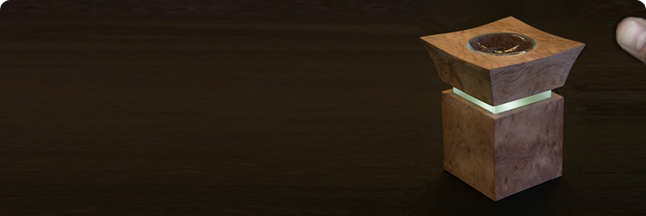Honoring Life
Afterlife Artifact is a product which stores a small sample of DNA, extracted from the deceased person in question, inside a crystal. This crystal is encoded by this DNA data, growing into unique shapes for each individual. Because of changes in temperature, the crystal rearranges itself countless times via a chemical process called sublimation.
The final design consists of two wood segments and two glass parts. The top part houses the crystals and the bottom acts as a medium for a very faint lightsource. This small light has two functions: it shows a soft glow when a person is standing in its presence and also acts as a activator by applying heat to the top glass part.
The Product
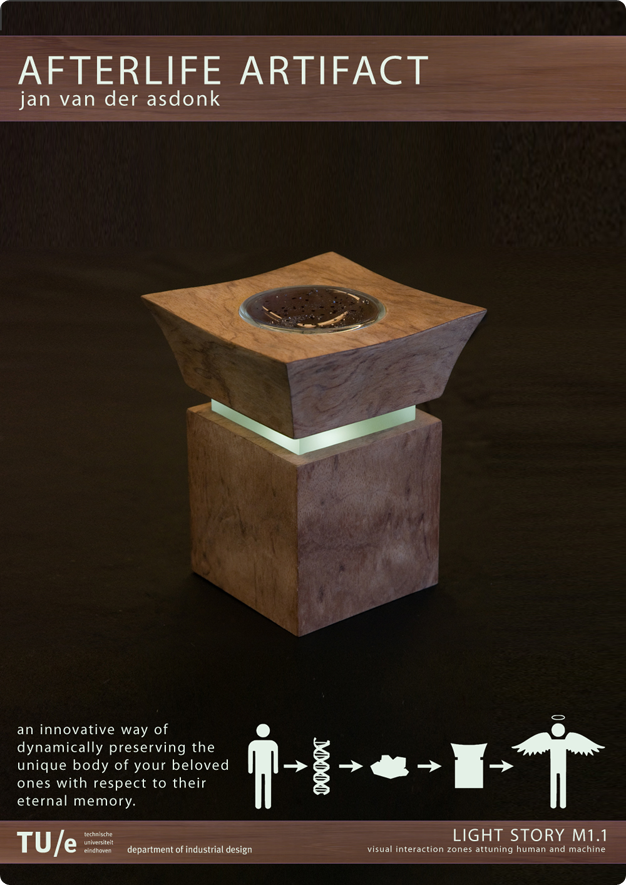

The Process
Life, Continued
A life has a beginning, a middle and an end. Just like any story. With this project the end is the focal point. The topic for this project focussed on designing an unique and truly innovative approach to an afterlife artifact. With afterlife artifact meaning objects such as a grave, urn or any other of object left behind when we pass away.
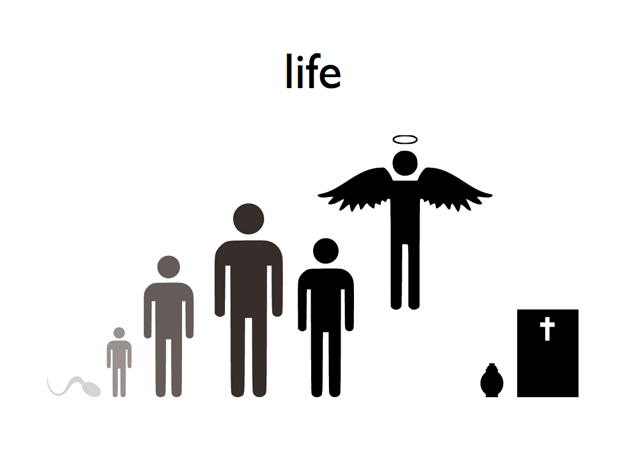
Today’s Afterlife Artifacts
However, there are some problems with today’s afterlife artifacts. For example: in locations such as Tokyo and London it becomes challenging to find a spot for graves. Moreover, there are some environmental issues with dumping all the chemicals and radiation our bodies collect during their lifespans into the soil.
Then there is the urn. Ancient as it may be, it is vastly becoming a popular alternative to the burial ritual. But these ceramic jars have not seen any decent design changes since their introduction and still resemble vases with a cap on top. All in all a very static representation of a dynamic person.
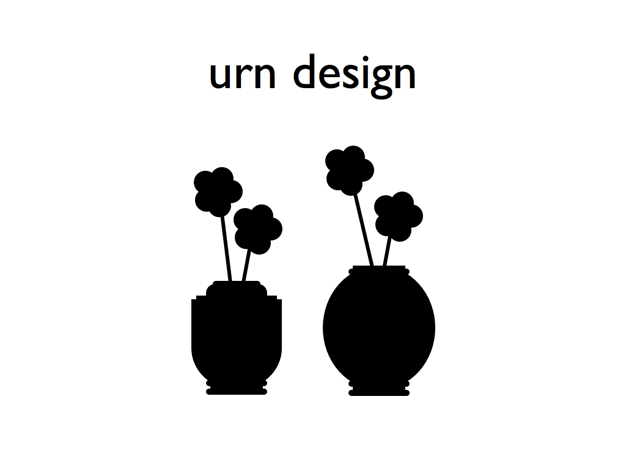
Then there is the fact that with graves the opportunity arises to bury family next to each other. An urn, on the other hand, is always alone, and has to be shared among the remaining family members.
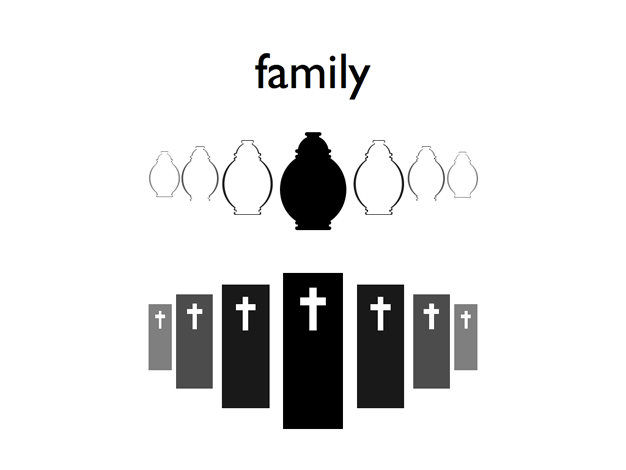
Sublimation with Crystals
In finding a new, more dynamic approach to representing the uniqueness of an individual, new materials were investigated. The lightbulb-moment came in the form of crystals. Using the chemical process called sublimation, where an element or compound changes from solid to a gas-state without an intermediate liquid stage. This meant a very dynamic material, with stunning properties.
Together with the Department of Chemistry a demo was created using iodine crustals inside a vacuum glass bulb. Iodine is solid at room temperatures but turns into a gas just above room temperature.
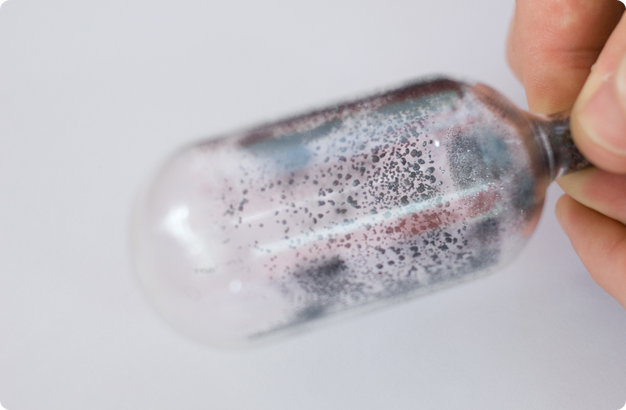
Eventually the crystals will grow to more concentrated chunks, because they adhere more easily to eachothers rough structure compared to the more smooth glass.
Data Storage
In creating the link between the crystals and the individual, assumptions were based on an existing study. This research field dealt with programming crystals by applying small changes to their core structures. The main goal of this investigation was to create crystals which could store data.
However, one of the findings resulted in crystals being programmed into a certain shape or structure. This lead to the premises that portions of human DNA could be translated into code, ultimately programming the crystals into unique structures. This would result in a totally unique construction of crystals based on the small perceptage of human DNA which is exclusive to each individual. This process paved the way for a creative phase where concepts could be generated using this approach.
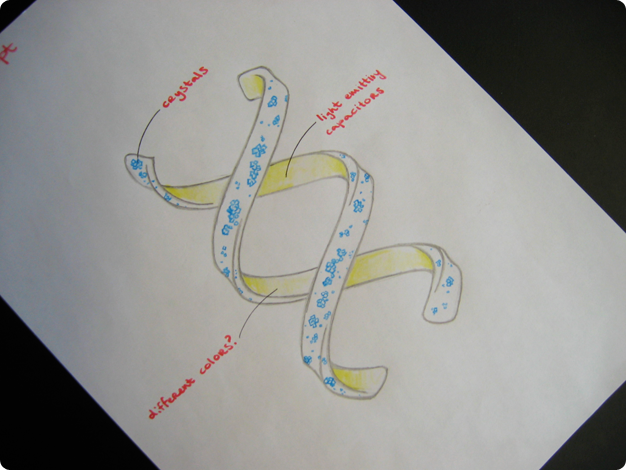
Artifact Form
Although the creative phase spawned many ideas, they did not seem to touch that illusive area worthy of this concept. In considering the moments of reconciliation common at afterlife artifacts, the conclusion was made that this design would take on shrine-like properties.
Because the crystals were going to become the dynamic and attention-asking part of the design, the actual form of the container of these crystals should be more primitive and minimalistic. Sketches exploring a design for such a box were done.
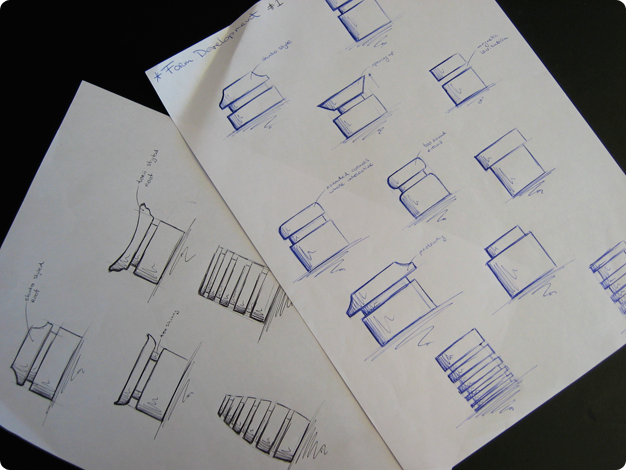
3D Model Investigation
This eventually moved to a more 3D approach where three models of MDF were constructed to experience the size and dimensions of the proposed design.
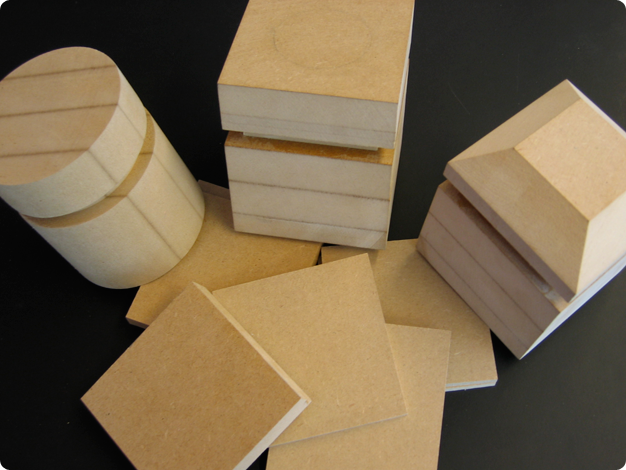
Form and Meaning
However, the problem with such a design is its meaning. The design of an afterlife artifact seeks to incorporate religious design cues. Unfortunately there is no such thing as a universal religious form language, they are highly religion-and culture bound.
So for this project a new form for a modern Western, culturally-diverse shrine-like afterlife artifact had to be designed. This proved to be extremely difficult.
In looking for a more satisfactory result a questionable theory was formed. What if certain visual keys of a deeply religious culture which most of us Wester people do not fully fathom, but perceive to be something magnificent, would be incorporated? Would these recognizable visual features trigger some kind feeling (be it conscious or subconscious) coupled to a holy artifact?
As an example the Shinto religion of Japan was used. This religious period spawned the well-known Shinto temples and iconic Torii gates found around Japan. 2D profile sketches of these iconic shapes were created.
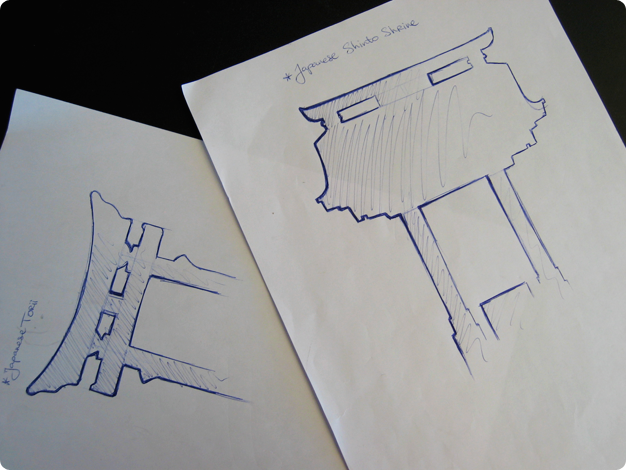
Again, Three Versions
Using this new visual motivation three main designs were constructed. Using technical drawings to illustrate their construction, these first iterations each had their strenghts and weaknesses.
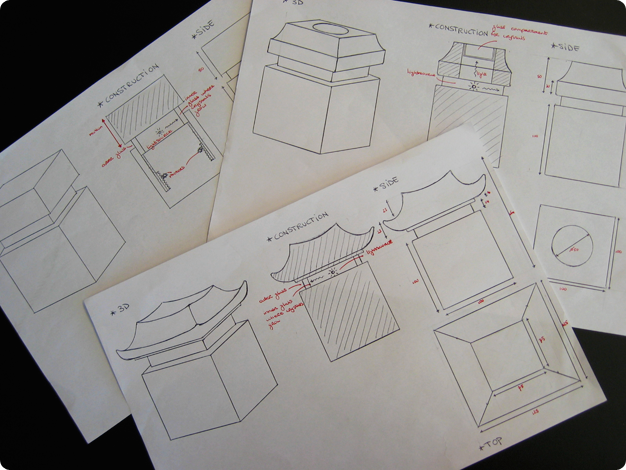
The Final Form
Still not fully convinced a new step was needed to blend the best of both worlds into one, creating a final design.
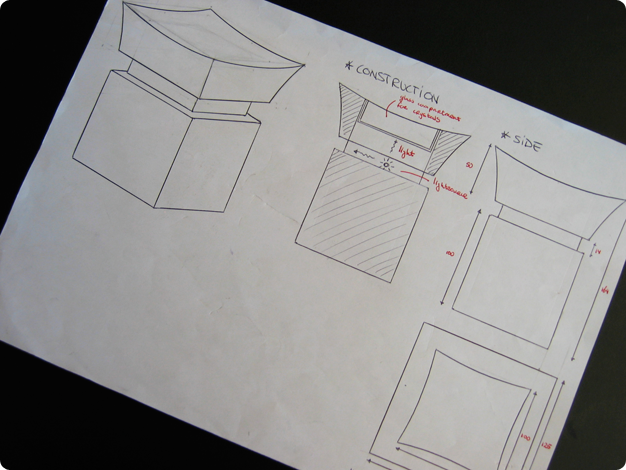
Materials
With the final design resembling the Shinto-based style while maintaining a minimalistic view, materials were needed. With such a private object as an afterlife artifact, there is no need for flashy materials. In wanting to preserve a very common look and feel, the choice was made to use wood.
Nonetheless, in adding the quality an afterlife artifact deserves, a rare African wood was used: bubinga. In working around the extreme hardness of this material, small sheets of veneer were used on a MDF base model instead of solid blocks of wood.
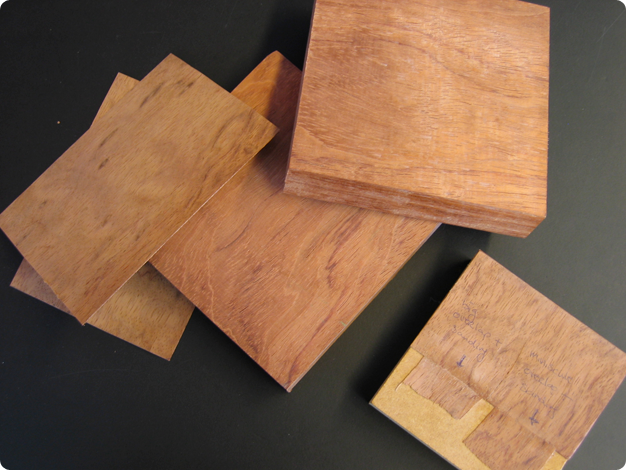
A Technical Overview
A final technical drawing sported the entire wood construction, as well as the glass components needed to convey the light and act as an compartment for the crystals.
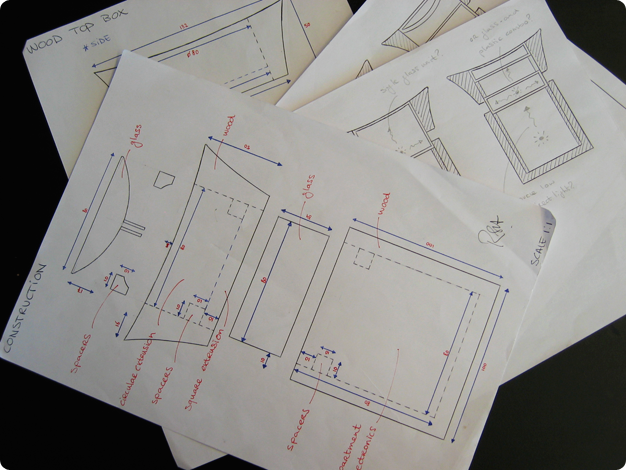
The MDF Backbone
Using these drawings hand carved-and chiseled MDF base models were constructed. They provided the backbone for the sheets of veneer and glass parts.
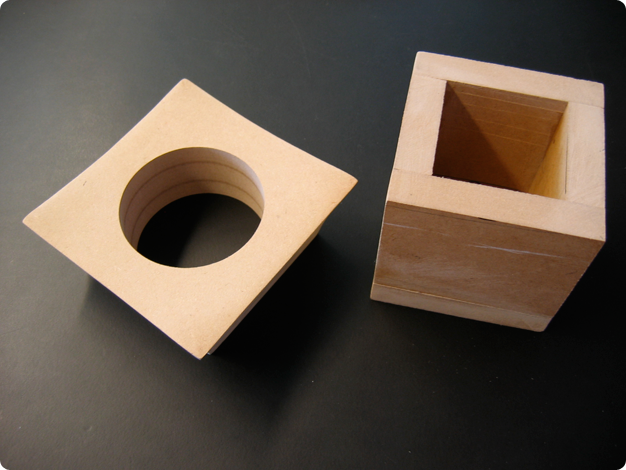
Bubinga Veneer
The veneer was applied by molding the sheets into shape by boiling them in hot water. Using a very fine glue and sand paper for the edges a seamless layer was applied. In adding another small detail the top of the design holds 2 mirrored sheets into 1 plane.
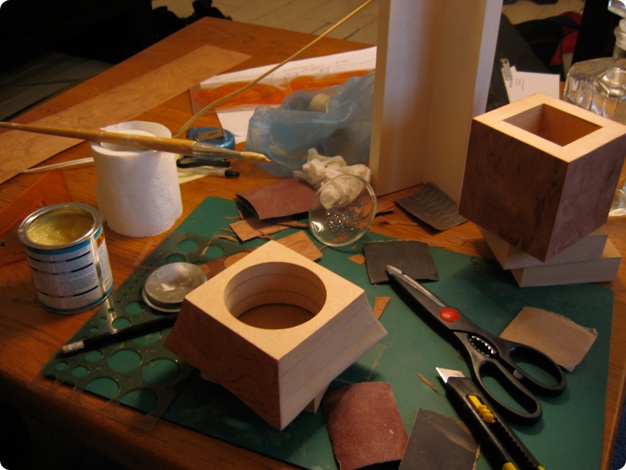
Ultimately the design showcases the unique approach to an afterlife artifact in adding the professional design qualities in creating this one-off masterpiece.

Stats
completed in: July, 2008
time spent on project: 8 weird weeks
stakeholder: Department of Industrial Design
